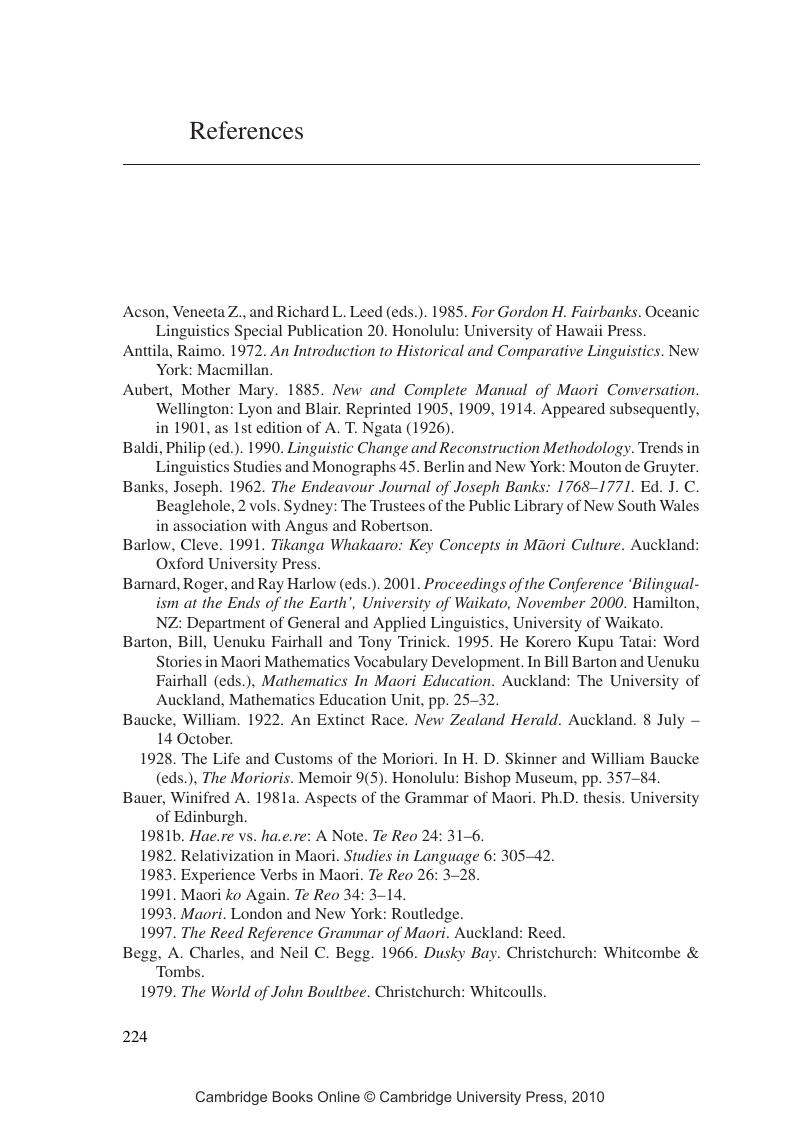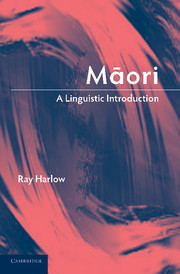Book contents
- Frontmatter
- Contents
- List of figures
- List of maps
- List of tables
- Acknowledgements
- List of abbreviations
- Introduction
- 1 Māori literature and literature on Māori
- 2 A brief history of Māori
- 3 Regional variation in Māori
- 4 The phonology of Māori
- 5 The morphology of Māori
- 6 The syntax of Māori
- 7 The sociolinguistic situation of Māori
- References
- Index
- References
References
Published online by Cambridge University Press: 28 January 2010
- Frontmatter
- Contents
- List of figures
- List of maps
- List of tables
- Acknowledgements
- List of abbreviations
- Introduction
- 1 Māori literature and literature on Māori
- 2 A brief history of Māori
- 3 Regional variation in Māori
- 4 The phonology of Māori
- 5 The morphology of Māori
- 6 The syntax of Māori
- 7 The sociolinguistic situation of Māori
- References
- Index
- References
Summary

- Type
- Chapter
- Information
- MaoriA Linguistic Introduction, pp. 224 - 238Publisher: Cambridge University PressPrint publication year: 2007



